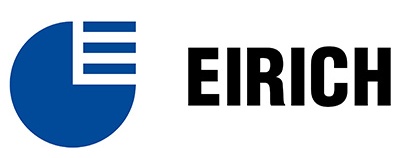22.03.2021
ATEX-compliant mixers for manufacturers of friction linings
Maschinenfabrik Gustav Eirich, Hardheim, Germany, reports that friction linings in the form of brake and clutch linings on the basis of organic binding agents play a very important role in modern engineering. Motion energy is converted to heat through friction, and the friction lining must display constant and uniform friction properties. There must not be any variation in compressive strength, shear strength, or material hardness across the entire lining, so strict requirements are placed on the homogeneity of the mixtures that are pressed into friction linings. It comes as no surprise then that renowned manufacturers are lining up for the best available mixing technology – which also allows dry and wet mixtures to be processed in the same machine.
In 2020, EIRICH again set up several projects for new mixers, including for manufacturers in Southern and Eastern Europe. In almost all of these projects the mixers were configured to be ATEX compliant, which is almost always the standard in this industry.
Friction linings consist of a large number of raw materials, with up to 50 different materials in a single recipe. The substances display a huge variation in terms of their bulk weights – ranging from 50-100g/l for fibres to over 4000g/l for metallic components. This places very high quality requirements on the mixing technology.
The manufacturers’ recipes have been carefully developed and fine-tuned for the relevant application and the specific requirements of their customers. Ingredients include inorganic fillers, lubricants, and metals in the form of powders, grains, or fibers. Plastic fibers are also often used – for example on the basis of aramid fibers – that do not melt when exposed to heat, but instead carbonize. In addition there is also the binding resin, which carbonizes under the effects of heat during the course of production and joins all the particles to each other. New graphite-based binding systems, which produce a mechanical bond under pressure, work with low resin content or with no resin at all.
In order to achieve the optimum mixing quality and carry out mixing processes without demixing, manufacturers of friction linings regularly opt for EIRICH mixing technology, according to the company. Here, the material being mixed is not transported by the mixing tools, but by the rotating pan. These mixers are used in a large number of industries whenever other mixing systems reach their design-imposed limits. Many investigations have shown that the Eirich technology can achieve mixing qualities that generally cannot be reached by other systems. The operating principle with a rotating mixing pan and material deflector prevents the formation of any poorly-mixed dead zones in the mixer, as every partial volume of the material mix is fed to the rotor tool. It also reliably rules out the occurrence of demixing in the mixer. www.eirich.com

« Back
|